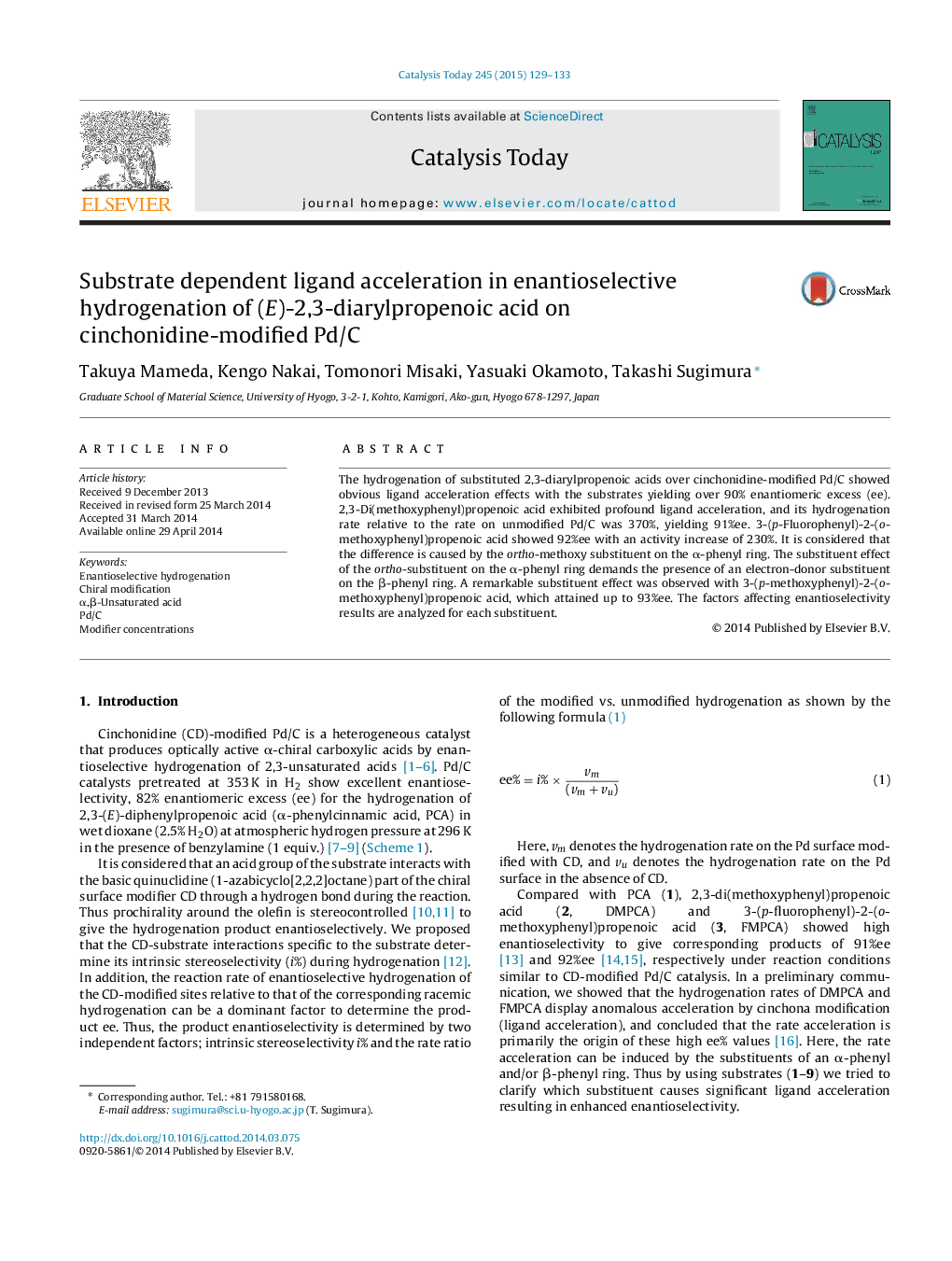| Article ID | Journal | Published Year | Pages | File Type |
|---|---|---|---|---|
| 54050 | Catalysis Today | 2015 | 5 Pages |
•Enantioselective hydrogenation was performed with a variety of phenylcinnamic acid derivatives.•Cinchonidine was a chiral modifier through the study.•Up to 93% enantiomeric excess (ee) was obtained depending on the substituent.•Ligand acceleration was observed overcoming suppression effect of the substrate adsorption.
The hydrogenation of substituted 2,3-diarylpropenoic acids over cinchonidine-modified Pd/C showed obvious ligand acceleration effects with the substrates yielding over 90% enantiomeric excess (ee). 2,3-Di(methoxyphenyl)propenoic acid exhibited profound ligand acceleration, and its hydrogenation rate relative to the rate on unmodified Pd/C was 370%, yielding 91%ee. 3-(p-Fluorophenyl)-2-(o-methoxyphenyl)propenoic acid showed 92%ee with an activity increase of 230%. It is considered that the difference is caused by the ortho-methoxy substituent on the α-phenyl ring. The substituent effect of the ortho-substituent on the α-phenyl ring demands the presence of an electron-donor substituent on the β-phenyl ring. A remarkable substituent effect was observed with 3-(p-methoxyphenyl)-2-(o-methoxyphenyl)propenoic acid, which attained up to 93%ee. The factors affecting enantioselectivity results are analyzed for each substituent.
Graphical abstractFigure optionsDownload full-size imageDownload high-quality image (188 K)Download as PowerPoint slide
